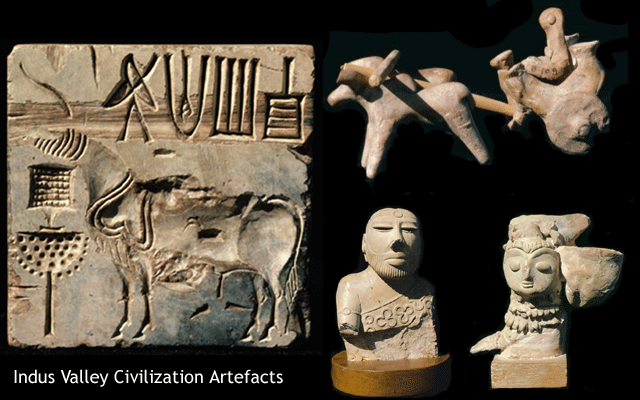Indus valley River Civilization
متطلبات الإكمال
 students will get to know the legacy of the Indus Valley River civilization and how it contributed to human development.
students will get to know the legacy of the Indus Valley River civilization and how it contributed to human development.
5. Decline
The Indus Valley Civilization declined around 1800 BCE, and scholars debate which factors resulted in the civilization’s demise. One theory suggested that a nomadic, Indo-European tribe called the Aryans invaded and conquered the Indus Valley Civilization, though more recent evidence tends to contradict this claim. Many scholars believe that the collapse of the Indus Valley Civilization was caused by climate change. Some experts believe the drying of the Saraswati River, which began around 1900 BCE, was the main cause for climate change, while others conclude that a great flood struck the area.
Various elements of the Indus Civilization are found in later cultures, suggesting the civilization did not disappear suddenly due to an invasion. Many scholars argue that changes in river patterns caused the large civilization to break up into smaller communities called late Harappan cultures.
Another disastrous change in the Harappan climate might have been eastward-moving monsoons, or winds that bring heavy rains. Monsoons can be both helpful and detrimental to a climate, depending on whether they support or destroy vegetation and agriculture.
By 1800 BCE, the Indus Valley climate grew cooler and drier, and a tectonic event may have diverted or disrupted river systems, which were the lifelines of the Indus Valley Civilization. The Harappans may have migrated toward the Ganges basin in the east, where they could have established villages and isolated farms. These small communities would not have been able to produce the same agricultural surpluses to support large cities. With the reduced production of goods, there would have been a decline in trade with Egypt and Mesopotamia. By around 1700 BCE, most of the Indus Valley Civilization cities had been abandoned.
